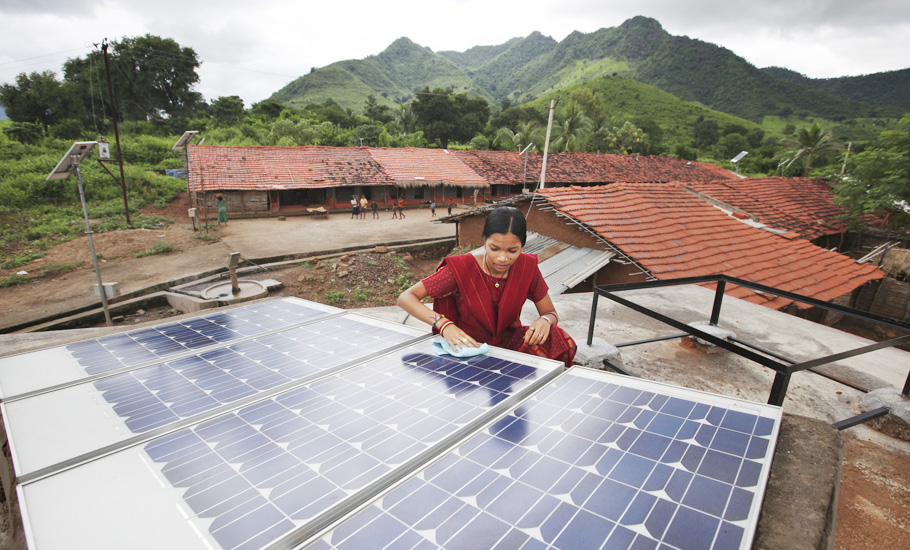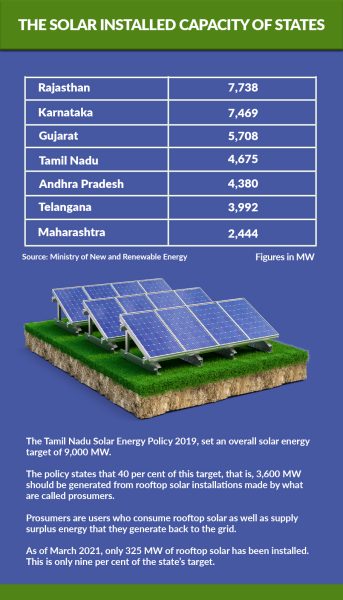
- Home
- ICC Champions Trophy 25
- The Great Language Divide
- Women's March
- News
- Premium
- THE FEDERAL SPECIAL
- Analysis
- States
- Perspective
- Videos
- Education
- Entertainment
- Elections
- Features
- Health
- Business
- Series
- Bishnoi's Men
- NEET TANGLE
- Economy Series
- Earth Day
- Kashmir’s Frozen Turbulence
- India@75
- The legend of Ramjanmabhoomi
- Liberalisation@30
- How to tame a dragon
- Celebrating biodiversity
- Farm Matters
- 50 days of solitude
- Bringing Migrants Home
- Budget 2020
- Jharkhand Votes
- The Federal Investigates
- The Federal Impact
- Vanishing Sand
- Gandhi @ 150
- Andhra Today
- Field report
- Operation Gulmarg
- Pandemic @1 Mn in India
- The Federal Year-End
- The Zero Year
- Science
- Brand studio
- Newsletter
- Elections 2024
- Home
- ICC Champions Trophy 25
- The Great Language Divide
- Women's March
- NewsNews
- Analysis
- StatesStates
- PerspectivePerspective
- VideosVideos
- Education
- Entertainment
- ElectionsElections
- Features
- Health
- BusinessBusiness
- Premium
- Loading...
Premium

Why Tamil Nadu is sliding off the rooftop solar panel dream

As Chennai, much like the rest of the country, was stewing in blistering heat accentuated by severe power cuts last month, Nityanand Jayaraman was luckier than most people to have some respite, at least from the outages. “My house has not had a power cut ever since we installed our rooftop solar ten years ago. We have installed a 1.25kw unit and it powers our fans, lights etc. We are...
As Chennai, much like the rest of the country, was stewing in blistering heat accentuated by severe power cuts last month, Nityanand Jayaraman was luckier than most people to have some respite, at least from the outages. “My house has not had a power cut ever since we installed our rooftop solar ten years ago. We have installed a 1.25kw unit and it powers our fans, lights etc. We are really happy with the after sales service as well and have hardly had any maintenance issues,” says the Chennai-based environmentalist.
Just like Jayaraman, Sai Subramanian, a resident of Ashok Nagar is also extremely happy with his rooftop solar installation. “I have seen a 40- 50 percent reduction in my electricity bill since I installed rooftop solar. Also there is no power cut, we have a DC to AC converter which automatically rotates the current when battery goes low, and vice versa, when sometimes it rains and the solar power gets cut,” he told The Federal.
While Jayaraman and Subramanian have had largely positive experiences with their solar energy systems, Pradeep S, a private sector professional based in Tambaram, wanted to install a rooftop solar setup in his home that can also connect to the state’s electricity grid but was put off by the process. “It was just too complicated. I am someone who is interested in clean energy but the process was just too slow and seemed too daunting.
Given my work and other commitments, I just couldn’t find the time to set this up. I hope the government makes it easier for people to install rooftop solar because I’m sure just like me, many others will be interested in doing this.”
It became amply clear how difficult and opaque the process is when popular playback singer Chinmayi Sripaada shared on social media a photo of sparkling clean rooftop solar panels at her in-laws’ home in Chennai. As she prided herself on the fact that her family was tapping into clean power with “no real bills”, many among her one million Twitter followers eagerly asked questions about how they could get one for their own houses, what would it cost and where would they find more information about it.

The questions didn’t come as a surprise to Chinmayi. In an interview to Thomson Reuters Foundation, she said, “Honestly, I was expecting questions since they (Tamil Nadu government) don’t make it easy for anyone… The information put out by government is almost inaccessible and people give up after a point, even if they are interested in solar power.”
Tamil Nadu’s experience so far with rooftop solar has been a mixed bag. Despite producing 55 per cent of its energy from renewable energy sources, rooftop solar is yet to take off in a big way in Tamil Nadu. The state is clearly aware of its incredible potential for solar energy, case in point being that it was the first state in the country to come up with a renewable energy policy in 2012. This awareness has not permeated to the state’s rooftop solar ambitions though. As of last year, the state has installed only nine per cent of its own target for rooftop solar.
All stakeholders, including the state government, Tamil Nadu Generation and Distribution Corporation Limited (TANGEDCO)- the state’s electricity utility which is in charge of production and distribution of electricity in the state, policy analysts, rooftop solar suppliers and, of course, end users, agree that this method of tapping into solar energy can reap rich dividends. Sadly, a plethora of issues, not least, the lack of enthusiasm on the part of the electricity utility for rooftop solar has resulted in a state of stasis.
Bottlenecks galore
The Tamil Nadu Solar Energy Policy 2019, set an overall solar energy target of 9,000 MW. The policy states that 40 per cent of this target, that is, 3,600 MW should be generated from rooftop solar installations made by what are called prosumers. Prosumers are users who consume rooftop solar as well as supply surplus energy that they generate back to the grid. As of March last year, only 325 MW of rooftop solar has been installed. This is only nine per cent of the state’s target.
“To be honest, no state does very well when it comes to achieving rooftop solar targets. Having said that, Tamil Nadu can definitely do better than what is happening right now,” says Martin Scherfler, co-founder of Auroville Consulting, who works on power-sector reforms.
In India, at least 40 GW was earmarked for rooftop solar by 2022 and 60 GW for utility-scale or ground-mounted projects as part of the nationwide revamped target for renewable energy installations in 2014.
The Union Ministry of New and Renewable Energy (MNRE) data indicates that of the 40 GW of installed solar capacity, only 6,111 MW (15 per cent of the target) was rooftop solar, as of November 2021.
During 2020-21, rooftop solar accounted for 1.9 GW, compared to 3.5 GW utility-scale solar.
More than 75 per cent of RTS installations are commercial and industrial (C&I) segment, according to the ministry data. Among the other segments are residential and public places.
Scherfler has advised various Indian states on their solar energy policy and has been observing and analysing the renewable energy sector for more than a decade. He adds, “In many cases, the (electricity) utility themselves are the ones preventing rooftop solar from being taken up en masse. This is because of a wrong perception that rooftop solar will result in commercial losses when the truth is that it will in most cases, help reduce the losses of many debt-driven utilities.”
According to Scherfler and other observers of Tamil Nadu’s rooftop solar programme, the key bottlenecks for better implementation are poorly conceived regulations, the utility already dealing with high losses, and a series of policy concessions that have addressed the utility’s concern rather than encourage consumers to install rooftop solar. For example, there is little to no incentive for consumers to go for rooftop solar right now in Tamil Nadu.
An example that illustrates the issues that consumers face due to policy is the recent regulatory changes related to the rooftop solar metering mechanisms.
“The recent introduction of network charges on the gross generation of solar energy from rooftop solar system s (₹0.83 per unit and ₹1.27 per unit for High Tariff and Low Tariff consumers respectively) will be a dampener. Assuming that the network charges will increase every year by at least 5 percent (rate of inflation), the network charges at the end of 25 (lifetime of the solar) for LT consumers will be Rs 4.30 per unit and for HT consumers, it will be Rs 2.81 per unit. At this rate the network charges will be higher than the cost of solar generation, resulting in de facto net negative returns to the consumers,” Scherfler says.
Need for course-correction
If it is so inclined, the state can step up its act on rooftop solar as it has done so in other related sectors such as encouraging electric vehicle manufacturers or enabling a conducive environment for large-scale renewable energy installations. The need of the hour is for the state’s agencies to take ownership and realise that more rooftop solar will ultimately only benefit the state as well as act as a welcome fillip to its green energy transition.
Scherfler says, “For example, it costs the utility today Rs 9.06 to deliver one kWh of energy, according to the state finance minister’s white paper before last year’s budget. None of the current electricity tariffs levied on the consumers are even close to this cost. So for every unit of electricity that the utility has to deliver today, it will make a loss.

Therefore, for every unit that is avoided, through rooftop solar energy generation by consumers, the utility makes a gain. On top of this, when you have rooftop solar at the tail end of the system, transmission and distribution losses are reduced. In Tamil Nadu these losses are as high as 14 per cent. So you can gain that amount immediately. These are just two of the multiple ways that the state and the people can benefit from rooftop solar.”
Another long-time observer of the sector is K Vishu Mohan Rao of the Citizen Consumer and Civic Action Group (CAG), based in Chennai. Rao’s solution to the issues that plague this sector is pragmatic. As Rao says, “At the end of the day if person wants to setup rooftop solar, he should not be thinking about selling power to utility but look more towards self-consumption. A balance needs to be struck where both the utility and the consumers are satisfied. Otherwise there will only be endless policy paralysis. Making oneself energy sustainable should be the motto driving rooftop solar installations.”
